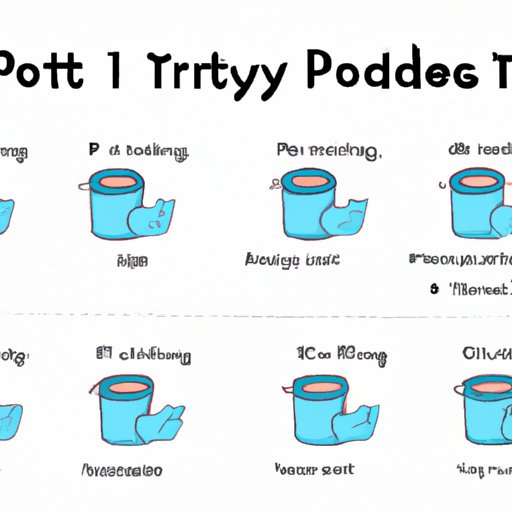
Introduction
One of the major milestones in a child’s development is potty training. Potty training is when a child learns how to use the bathroom independently, maintain cleanliness, and hygiene. Therefore, it is a significant achievement for both the child and parent. However, it can be a daunting task for parents to start potty training their child. This article will provide a comprehensive guide on how to start potty training, its benefits, signs that indicate a child is ready, the schedule and routine that parents should follow, common challenges, and solutions, introducing potty training to your child, and fun engaging activities.
Benefits of Potty Training
Potty training offers numerous benefits to both the child and parent. For starters, it saves a lot of time and money on buying diapers and changing them frequently. Potty training also helps in avoiding diaper rash, which is a common condition that occurs when prolonged usage of diapers. Additionally, it promotes independence, confidence, and self-esteem in children.
Signs That a Child is Ready for Potty Training
Recognizing signs indicating the readiness of a child to start potty training is crucial. These signs include; being dry for a few hours, expressing an interest in the toilet or the process of using it, being able to pull down their pants, and having the ability to communicate when they need to go to the bathroom. Parents should also evaluate their child’s characteristics and monitor their behavior to know the most appropriate time to start potty training.
Potty Training Schedule and Routine
To ensure the success of potty training, parents should create a flexible schedule and routine. A timer can be used during the initial stages of potty training, where the child is reminded to go to the bathroom. Parents should offer rewards and motivation when their child successfully uses the toilet, and patience should be exercised throughout the training process. Parents must also remember that every child is unique, and the schedule should be tailored to fit their child.
Common Potty Training Challenges and Solutions
Parents may face certain challenges when potty training their child, such as resistance or behavioral problems. It’s important to understand that these challenges are typical and can be overcome with patience and support. Parents can use positive reinforcement and praise their child for good behavior. Also, teach your child the importance of cleanliness and hygiene, emphasizing that it is part of growing up. In case of accidents, parents can reassure their child and not to scold or punish them harshly.
How to Introduce Potty Training to Your Child
Parents should introduce potty training gradually and make it a fun and engaging experience. It is essential to communicate to your child that it is a natural process, and they should not feel ashamed or uncomfortable. Parents should first teach the child how to use the potty chair correctly and encourage them to practice regularly until it becomes a habit. Proper hygiene practices such as hand washing must also be emphasized.
Fun and Engaging Potty Training Activities and Games
Potty training can be a tedious and often challenging experience for both the parent and child. Parents should find ways of making it enjoyable and engaging for their child, such as using toys that teach the child how to use the bathroom correctly, storytelling, singing songs, or playing games like Peekaboo. Creating an exciting and enjoyable experience makes it easier to potty train a child faster.
Conclusion
Potty training is a significant milestone in a child’s development, and parents should be patient, encouraging, and supportive throughout the experience. With this guide, parents can start potty training their child with ease. Remember, every child is different and parents should tailor their approach to meet their child’s unique needs. Have fun, celebrate success, and offer plenty of praise and rewards along the way.





